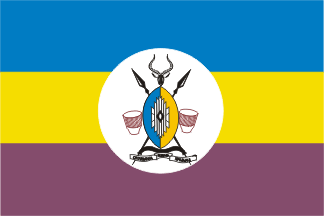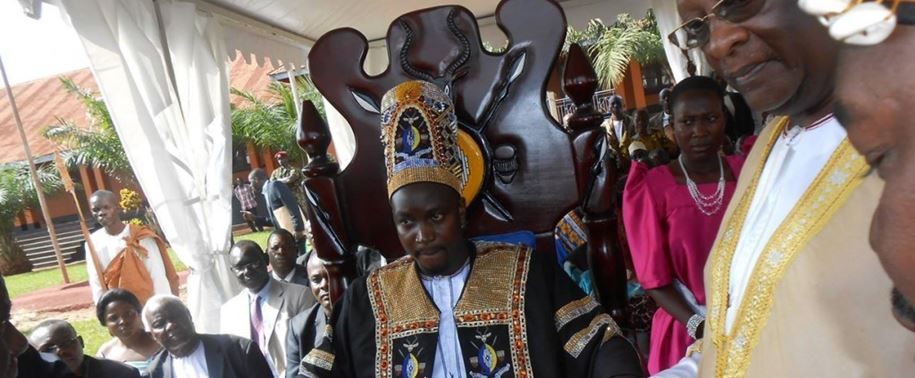Population & Culture
The Cultural Institution
Busoga is a traditional Bantu kingdom in present-day Uganda.
 It is a cultural institution that promotes popular participation and unity among the people of Busoga, through cultural and developmental programs for the improved livelihood of the people of Busoga. It strives for a united people of Busoga, who enjoy economic, social and cultural prosperity. It also continues to enhance, revamp and pave the way for an efficient institutional and management system for the Kyabazinga kingship.
It is a cultural institution that promotes popular participation and unity among the people of Busoga, through cultural and developmental programs for the improved livelihood of the people of Busoga. It strives for a united people of Busoga, who enjoy economic, social and cultural prosperity. It also continues to enhance, revamp and pave the way for an efficient institutional and management system for the Kyabazinga kingship.
Busoga, literally translated to Land of the Soga, is the kingdom of the 11 principalities of the Basoga/Soga (singular Musoga) people. The term Busoga also loosely refers to the area that is generally indigenous to the Basoga. The kingdom’s capital is located in Bugembe, which is near Jinja, the second largest city in Uganda. As of June 2007, Busoga Kingdom is composed of eight politically organised districts: Kamuli, Iganga, Bugiri,Mayuge, Jinja, and the newly created districts of Kaliro and Busiki (luuka district). Each district is headed by democratically elected chairpersons orLocal Council Five, while municipalities are headed by an elected mayor. Jinja is the industrial and economical hub of Busoga. The Busoga area is bounded on the north by the swampy Lake Kyoga which separates it from Lango, on the west by the Victoria Nile which separates it from Buganda, on the south by Lake Victoria which separates it from Tanzania and Kenya, and on the east by the Mpologoma River, which separates it from various smaller tribal groups (Padhola, Bugwere, Bugisu, etc.). Busoga also includes some islands in Lake Victoria, such as Buvuma Island.
The Kyabazinga
- Title of Head of Busoga : His Royal Highness Isebantu Kyabazinga
- Short Title : The Kyabazinga of Busoga

Busoga is ruled by the Isebantu Kyabazinga of Busoga. This name was a symbol of unity derived from the expression and recognition by the Basoga that their leader was the “father of all people who brings all of them together”, and who also serves as their cultural leader. In 1995, the government restored monarchies in Uganda with the promulgation of the new constitution of the Republic of Uganda; Article 246(1). On February 11, 1996, His Royal Highness Henry Wako Mulokiwas reinstated as Kyabazinga Isebantu of Busoga. He served until Monday, 1 September 2008, when he finally succumbed to esophageal cancer at the Mulago National Referral Hospital in Kampala, at the age of 87.
In a condolence message, Y.K Museveni, the president of Uganda described Muloki as “a great cultural leader and father” who was “generous and kind”.
Since his re-installation on 11 February 1996, Muloki had been a unifying factor in Busoga, the President noted. “The Government has had the privilege of working with Isebantu Muloki in developing our nation”. Referring to the Kyabazinga as “a strong pillar”, Museveni said although Busoga was one of the youngest kingdoms, under the leadership of Muloki, it had become strong. “Uganda mourns not only one of her esteemed traditional leaders but a national who put development and the welfare of the people of Busoga at the helm of his reign”, Museveni added. The achievements of Muloki include special programs initiated for girl-child education, for the youth and for the elderly and the disadvantaged.
Main articles: Uganda before 1900 and Colonial Uganda
Written history begins for Busoga in the year 1862. On 28 July 1862, John Hanning Speke, an explorer for the Royal Geographical Society, arrived at Ripon Falls, near the site of the modern town of Jinja, where the Victoria Nile spills out of Lake Victoria and begins its descent to Egypt. Since Speke’s route inland from the East African coast had taken him around the southern end of the lake Victoria, he approached Busoga from the west through Buganda. Having reached his goal – the source of the Nile, he turned northward and followed the river downstream without further exploring Busoga. He records, however, being told that “Usoga” (the Swahili form of the name “Busoga”) was an “island”, which indicates that the term meant to surrounding peoples essentially what it means today. The present day Busoga Kingdom was, and still is, bounded on the north by the swampy Lake Kyoga, on the west by the Victoria Nile, on the south by Lake Victoria, and on the east by the Mpologoma River.
- Main articles: Uganda before 1900 and Colonial Uganda
- In the 19th century, one of the principal routes along which Europeans travelled from the coast to Buganda passed through the southern part of Busoga. From John Speke and James Grant, SirGerald Portal, F.D Lugard, J.R. Macdonald, and Bishop Tucket all noted that Busoga was plentifully supplied with food and was densely settled as a result. However, between 1898–99 and 1900–01, the first indications of sleeping sickness were reported.
- In 1906, orders were issued to evacuate the region. Despite the attempts to clear the area, the epidemic continued in force until 1910. As a result, most of the densely populated parts of Busoga, the home land of over 200,000 persons in the 19th Century, was totally cleared of the population in the ten years. Lubas palace at Bukaleba, also the coveted European fruit mission, collapsed and relocated to other parts of Busoga. Southern Busoga constituted of about one third of the land area of Busoga, and, in 1910, southern Busoga was vacant. In the 1920s and 1930s, some of the evacuees who survived the epidemic began to return to their original land. However, in 1940 a new outbreak of sleeping sickness resurfaced in the area, and it was only in 1956 that resettlement, promoted by the government began again, but things were not going to be the same again. Few Basoga returned to their traditional lands.
- The consequences of the catastrophe were that the Southern part of Busoga, the area roughly corresponding to what Johnston delimited as the most densely populated area, was virtually uninhabited. Other areas originally affected by sleeping sickness, including the eastern margins of Bukooli and Busiki conties were evidently depopulated too. Famines, too, resulted in substantial population movements. Several areas in north east Busoga and in the adjacent Bukandi district across the Mpologoma river were repeatedly struck by famines in 1898 to 1900, 1907, 1908, 1917, 1918 and 1944. Populations in these areas reduced, many people, falling victims to the famines while the survivors moved to other areas for safety.
- The effects of these movements were apparent from the growth in population density in the central area of Busoga and in urban and peri-urban areas of Busoga. Many Basoga left Busoga in the same period, settling in other districts. The demographic profile of Busoga today is, as a consequence of all these developments. Today, Busoga is home to many people, of about 6 different origins.
